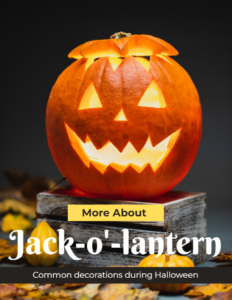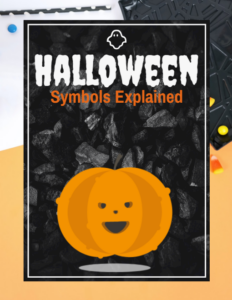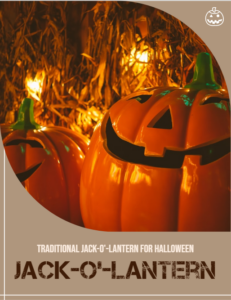What is jack-o’-lantern? The history of jack-o’-lanterns
There’s no more classic Halloween image than a glowing jack-o-lantern perched on a window or porch, creating an eerie atmosphere. Carving pumpkins has been a beloved fall tradition in America for decades, celebrated through parties, festivals, and television contests.
The backstory of the jack-o-lanterns, including how they became the star of Halloween decorations and why they were carved in the first place, is a story worth telling. Although the legendary Headless Horseman and the pumpkins he threw have been scaring Americans for generations, jack-o-lanterns actually date back to centuries of Old World traditions in countries like Ireland, England and Scotland.
Along the way, pagan rituals, grotesque folktales, and natural phenomena intertwine to create a fascinating history that is part fact, part fiction, and very entertaining
What is Jack-o’-lantern
A jack-o’-lantern (or jack o’lantern) is a carved turnip, pumpkin, or other root vegetable lantern, commonly associated with the Halloween holiday. Its name comes from the reported phenomenon of strange lights flickering over peat bogs, called will-o’-the-wisps or jack-o’-lanterns. The name is also tied to the Irish legend of Stingy Jack, a drunkard who bargains with Satan and is doomed to roam the Earth with only a hollowed turnip to light his way.
Jack-o’-lanterns carved from pumpkins are a yearly Halloween tradition that developed in the United States when Irish immigrants brought their root vegetable carving tradition with them.
History of Jack-o’-lantern
The carving of vegetables has been a common practice in many parts of the world. It is believed that the custom of making jack-o’-lanterns at Halloween time began in Ireland. In the 19th century, “turnips or mangel wurzels, hollowed out to act as lanterns and often carved with grotesque faces,” were used on Halloween in parts of Ireland and the Scottish Highlands. In these Gaelic-speaking regions, Halloween was also the festival of Samhain and was seen as a time when supernatural beings (the Aos Sí), and the souls of the dead, walked the earth. Jack-o’-lanterns were also made at Halloween time in Somerset, England (see Punkie Night) during the 19th century.
By those who made them, the lanterns were said to represent either spirits or supernatural beings or were used to ward off evil spirits. For example, sometimes they were used by Halloween participants to frighten people, and sometimes they were set on windowsills to keep harmful spirits out of one’s home. It has also been suggested that the jack-o’-lanterns originally represented Christian souls in purgatory, as Halloween is the eve of All Saints’ Day (1 November)/All Souls’ Day (2 November).
On January 16 in 1836, the Dublin Penny Journal published a long story on the legend of “Jack-o’-the-Lantern”, although this does not mention the lantern being carved from a vegetable. In 1837, the Limerick Chronicle refers to a local pub holding a carved gourd competition and presenting a prize to “the best crown of Jack McLantern”. The term “McLantern” also appears in an 1841 publication of the same paper.
There is also evidence that turnips were used to carve what was called a “Hoberdy’s Lantern” in Worcestershire, England, at the end of the 18th century. The folklorist Jabez Allies outlines other derivations of the name, “Hobany’s”, which is most likely derived from “Hob and his”, with other variations including “Hob-o’-Lantern”, “Hobbedy’s Lantern” and “Hobbady-lantern”.
Folklore
The story of the jack-o’-lantern comes in many forms and is similar to the story of Will-o’-the-wisp retold in different forms across Western Europe, including, Italy, Norway, Spain, and Sweden. In Switzerland, children will leave bowls of milk or cream out for mythical house spirits called Jack o’ the bowl. An old Irish folk tale from the mid-18th century tells of Stingy Jack, a lazy yet shrewd blacksmith who uses a cross to trap Satan. One story says that Jack tricked Satan into climbing an apple tree, and once he was up there, Jack quickly placed crosses around the trunk or carved a cross into the bark, so that Satan couldn’t get down.
Another version of the story says that Jack was getting chased by some villagers from whom he had stolen. He then met Satan, who claimed it was time for him to die. However, the thief stalled his death by tempting Satan with a chance to bedevil the church-going villagers chasing him. Jack told Satan to turn into a coin with which he would pay for the stolen goods (Satan could take on any shape he wanted); later, when the coin (Satan) disappeared, the Christian villagers would fight over who had stolen it. The Devil agreed to this plan. He turned himself into a silver coin and jumped into Jack’s wallet, only to find himself next to a cross Jack had also picked up in the village. Jack closed the wallet tight, and the cross stripped the Devil of his powers, and so he was trapped.
In both folktales, Jack lets Satan go only after he agrees to never take his soul. Many years later, the thief died, as all living things do. Of course, Jack’s life had been too sinful for him to go to Heaven; however, Satan had promised not to take his soul, and so he was barred from Hell as well. Jack now had nowhere to go. He asked how he would see where to go, as he had no light, and Satan mockingly tossed him burning coal, to light his way. Jack carved out one of his turnips (which were his favorite food), put the coal inside it, and began endlessly wandering the Earth for a resting place. He became known as “Jack of the Lantern”, or jack o’lantern.
Cornish folklorist Dr. Thomas Quiller Couch (d. 1884) recorded the use of the term in a rhyme used in Polperro, Cornwall, in conjunction with Joan the Wad, the Cornish version of Will-o’-the-wisp. The people of Polperro regarded them both as pixies. The rhyme goes:
Jack o’ the lantern! Joan the wad,
Who tickled the maid and made her mad
Light me home, the weather’s bad.
Jack-o-lanterns were also a way of protecting one’s home against the undead. Superstitious people used them specifically to ward off vampires. They thought this because it was said that the jack-o-lantern’s light was a way of identifying vampires who, once their identity was known, would give up their hunt for you.
You can know more about Jack-o’-lantern with Visual Paradigm Online:
More About Jack-o’-lantern – Common Decorations During Halloween

Click here to read this book
Halloween Symbols Explained

Click here to read this book
Jack-o’-lantern Book

Click here to read this book

